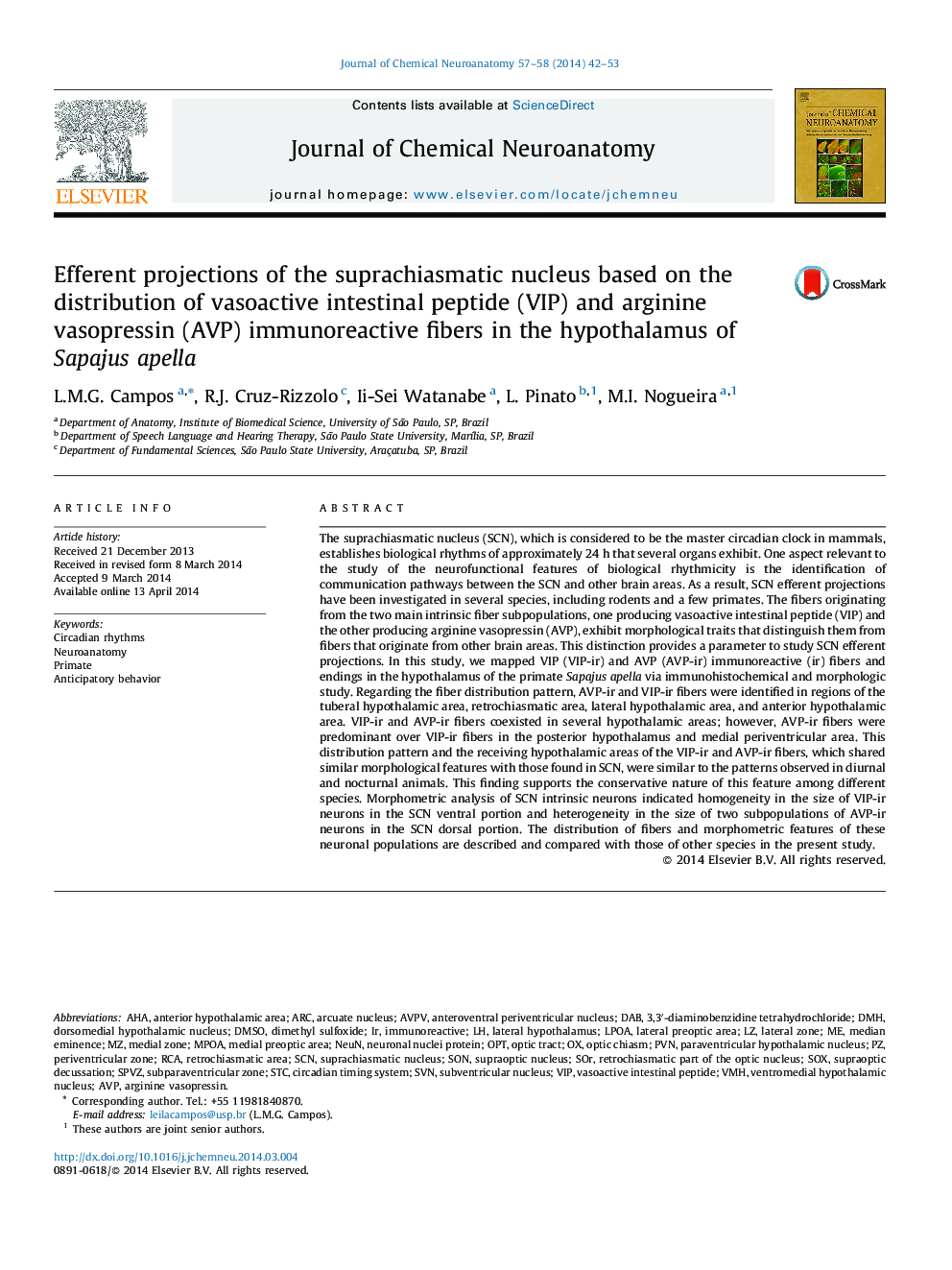| Article ID | Journal | Published Year | Pages | File Type |
|---|---|---|---|---|
| 1988838 | Journal of Chemical Neuroanatomy | 2014 | 12 Pages |
•The distribution of VIP-ir neurons in the SCN is conserved among different species.•The localization of AVP-ir neurons in the SCN is central and dorsal, not dorsomedial as in rodents.•AVP-ir and VIP-ir fibers from the SCN exhibit varicosities at intervals and dilated terminal buttons.•AVP-ir and VIP-ir fibers coexist in the same hypothalamic receiving areas for the SCN.
The suprachiasmatic nucleus (SCN), which is considered to be the master circadian clock in mammals, establishes biological rhythms of approximately 24 h that several organs exhibit. One aspect relevant to the study of the neurofunctional features of biological rhythmicity is the identification of communication pathways between the SCN and other brain areas. As a result, SCN efferent projections have been investigated in several species, including rodents and a few primates. The fibers originating from the two main intrinsic fiber subpopulations, one producing vasoactive intestinal peptide (VIP) and the other producing arginine vasopressin (AVP), exhibit morphological traits that distinguish them from fibers that originate from other brain areas. This distinction provides a parameter to study SCN efferent projections. In this study, we mapped VIP (VIP-ir) and AVP (AVP-ir) immunoreactive (ir) fibers and endings in the hypothalamus of the primate Sapajus apella via immunohistochemical and morphologic study. Regarding the fiber distribution pattern, AVP-ir and VIP-ir fibers were identified in regions of the tuberal hypothalamic area, retrochiasmatic area, lateral hypothalamic area, and anterior hypothalamic area. VIP-ir and AVP-ir fibers coexisted in several hypothalamic areas; however, AVP-ir fibers were predominant over VIP-ir fibers in the posterior hypothalamus and medial periventricular area. This distribution pattern and the receiving hypothalamic areas of the VIP-ir and AVP-ir fibers, which shared similar morphological features with those found in SCN, were similar to the patterns observed in diurnal and nocturnal animals. This finding supports the conservative nature of this feature among different species. Morphometric analysis of SCN intrinsic neurons indicated homogeneity in the size of VIP-ir neurons in the SCN ventral portion and heterogeneity in the size of two subpopulations of AVP-ir neurons in the SCN dorsal portion. The distribution of fibers and morphometric features of these neuronal populations are described and compared with those of other species in the present study.
